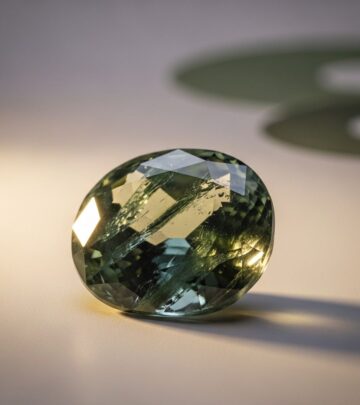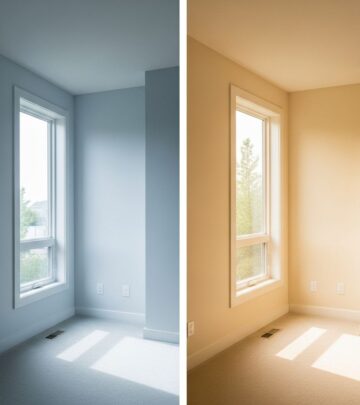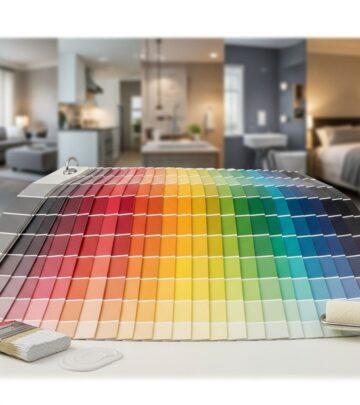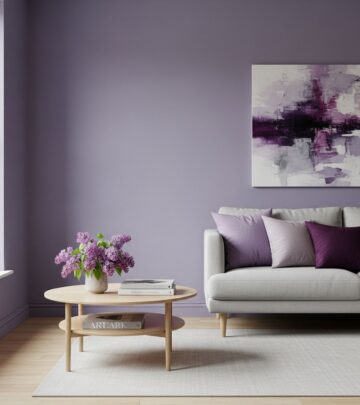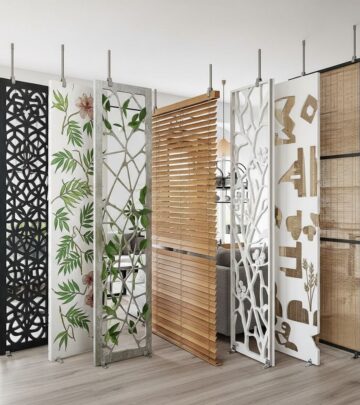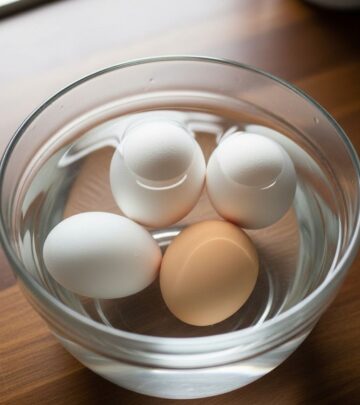Laminate Vs. Hardwood Flooring: 5 Key Differences For Your Home
Discover the key differences between laminate and hardwood flooring to make the best choice for your home
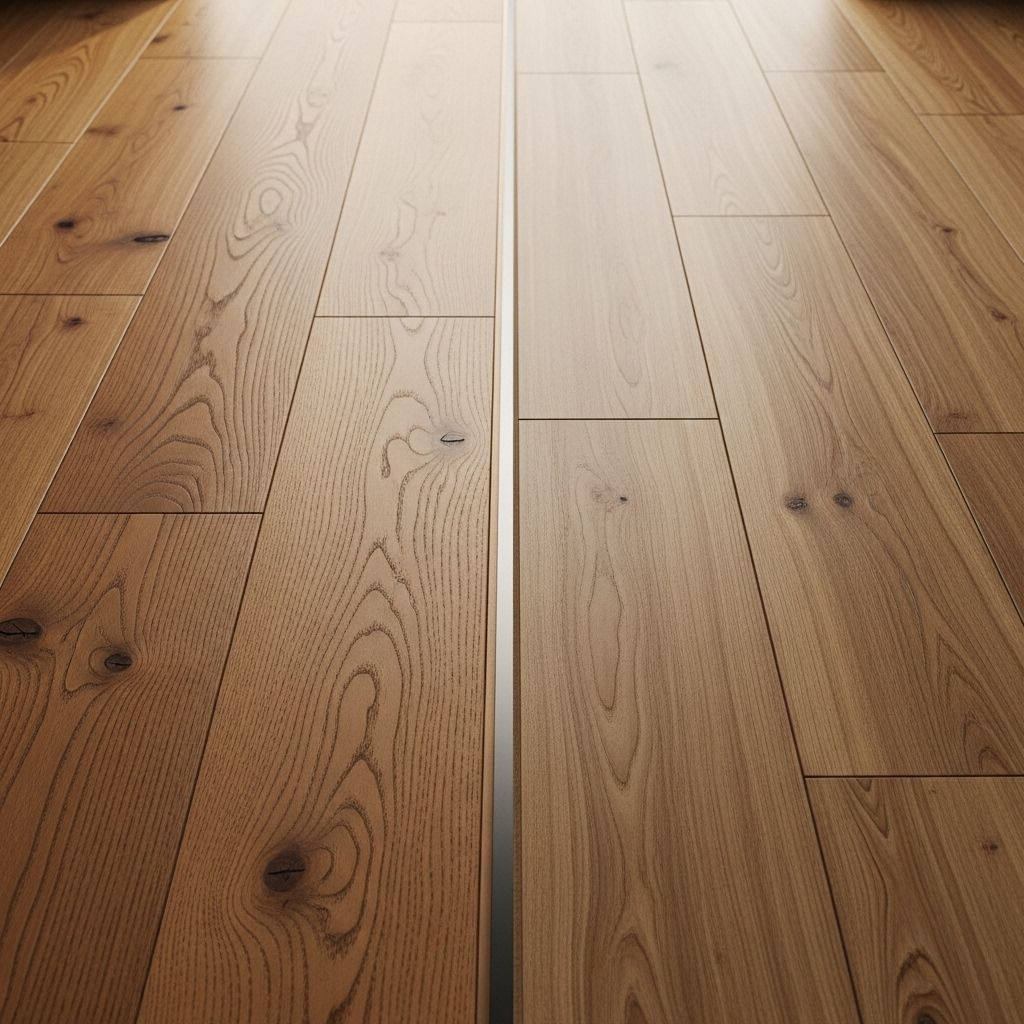
Image: HearthJunction Design Team
Laminate vs. Hardwood Flooring: A Complete Comparison Guide
When it comes to choosing the right flooring for your home, the debate between laminate and hardwood is common among homeowners. Both options have distinct characteristics that might make one more suitable than the other depending on your specific needs, preferences, and budget constraints. This comprehensive guide will help you understand the key differences between laminate and hardwood flooring across various important factors.
Understanding the Basics: What Are They?
Solid Hardwood Flooring
Solid hardwood flooring is made from single pieces of natural wood harvested from trees. Each plank is milled from a solid piece of hardwood and typically measures between 5/8 and 3/4 inches thick. The natural beauty of hardwood comes from its unique grain patterns, color variations, and natural imperfections that give each board its own distinctive character.
Hardwood flooring is available in numerous wood species, each offering its own hardness level, color, and grain pattern. Common options include oak, maple, cherry, walnut, and exotic species like Brazilian cherry or teak. The variety of choices allows homeowners to select the perfect match for their home’s aesthetic.
Laminate Flooring
Laminate flooring is a synthetic product that simulates the appearance of natural wood. It consists of multiple layers fused together:
- A wear layer on top that protects against scratches, stains, and fading
- A decorative layer with a high-resolution photograph of wood grain
- A core layer made of high-density fiberboard (HDF)
- A backing layer that provides stability and moisture resistance
Modern laminate flooring has come a long way in mimicking the look of real wood, with improved printing techniques and texture embossing that can create a surprisingly realistic appearance.
Cost Comparison
Solid Hardwood
Hardwood flooring is generally more expensive than laminate, with prices typically ranging from $5 to $15 per square foot for materials alone. Premium and exotic hardwood species can cost even more, potentially reaching $25 per square foot. Professional installation adds another $3 to $8 per square foot, making the overall investment significant.
The higher cost of hardwood is justified by its longevity and the value it adds to a home. Many real estate agents confirm that hardwood floors can increase a home’s resale value and appeal to potential buyers.
Laminate
Laminate flooring is considerably more budget-friendly, with material costs typically ranging from $1 to $5 per square foot. Higher-quality laminate with enhanced features like water resistance or more realistic textures may cost between $3 and $7 per square foot.
Installation costs for laminate are also lower, ranging from $2 to $5 per square foot. The click-lock installation system makes laminate a popular choice for DIY projects, potentially eliminating professional installation costs altogether.
Best for Cost: Laminate
If budget is your primary concern, laminate flooring offers a clear advantage. The initial investment is significantly lower, especially when considering DIY installation. However, it’s important to consider long-term value as well—hardwood’s durability and potential to increase home value might make it more economical over decades of use.
| Cost Factor | Hardwood | Laminate |
|---|---|---|
| Materials | $5-$15/sq ft | $1-$5/sq ft |
| Installation | $3-$8/sq ft | $2-$5/sq ft |
| Long-term Value | High | Moderate |
Durability and Lifespan
Solid Hardwood
Hardwood flooring is renowned for its exceptional longevity. With proper maintenance, hardwood floors can last 50-100 years or more. The primary advantage of hardwood is that it can be sanded and refinished multiple times throughout its lifespan, effectively renewing its appearance when signs of wear become visible.
The durability of hardwood varies by species. Harder woods like oak and maple resist dents and scratches better than softer species like pine. The industry standard for measuring hardness is the Janka scale, which quantifies a wood’s resistance to denting and wear.
Despite its durability, hardwood has vulnerabilities. It can be scratched by pet claws, dented by dropped objects, and damaged by excessive moisture. Sunlight can also fade its color over time.
Laminate
Laminate flooring typically has a lifespan of 15-25 years. While it cannot be refinished like hardwood, its wear layer provides excellent resistance to scratches, impacts, and fading. Many manufacturers offer wear warranties ranging from 10 to 25 years.
Modern laminate flooring is engineered with durability in mind. Higher-quality products often include features like enhanced scratch resistance, UV protection to prevent fading, and water resistance. However, once damaged, laminate planks generally need to be replaced rather than repaired.
Best for Durability: Hardwood
While laminate offers good short-term durability and resistance to surface damage, solid hardwood’s ability to be refinished gives it superior long-term durability. A well-maintained hardwood floor can outlast multiple installations of laminate flooring, making it the clear winner in this category.
Appearance and Style
Solid Hardwood
Hardwood flooring offers unmatched natural beauty and character. Each board has unique grain patterns, color variations, and natural markings that create a warm, authentic look. Hardwood develops a distinctive patina over time that many homeowners find appealing—a characteristic that synthetic materials cannot replicate.
Hardwood is available in various finishes, from glossy to matte, and can be stained to achieve virtually any color tone. It can be installed in different patterns such as straight, diagonal, herringbone, or parquet for custom design effects.
Laminate
Laminate flooring has made tremendous advancements in realism. High-definition printing technology allows manufacturers to create detailed wood grain images, while embossing techniques add texture that can closely mimic real wood.
However, laminate flooring has a repeating pattern across boards, which can make it distinguishable from hardwood upon close inspection. In a large room, pattern repetition might become noticeable, diminishing the realistic effect.
Best for Appearance: Hardwood
Despite improvements in laminate technology, hardwood remains superior for authentic appearance. Its natural variations, unique character, and ability to develop a beautiful patina over time give it an aesthetic advantage that synthetic alternatives cannot match.
Comfort and Sound
Solid Hardwood
Hardwood floors tend to hold true to their name: they are hard underfoot. This can sometimes lead to discomfort during long periods of standing. However, hardwood naturally feels warmer to the touch than many synthetic materials.
Radiant heating systems can be installed under solid hardwood flooring, though this requires careful planning and specific installation techniques. The need for auxiliary heat is typically less than with laminate flooring because hardwood naturally retains warmth better.
In terms of acoustics, hardwood floors can sometimes create echo or amplify footsteps, especially in large or minimally furnished rooms. However, they generally produce a more solid, less hollow sound than floating floor systems.
Laminate
Laminate flooring is generally somewhat soft underfoot since it is installed over a foam underlayment. This can provide more comfort during standing or walking. However, as a floating floor, it can sometimes flex underfoot unless the subfloor is perfectly flat.
The hard plastic wear layer can transmit the clicks of shoe heels and pet toenails more noticeably than hardwood. Some homeowners find the hollow sound of laminate flooring less appealing than the solid sound of hardwood.
Like hardwood, laminate flooring can be installed over radiant heating systems to create a warmer, cozier floor.
Best for Comfort and Sound: Laminate
Both flooring materials have roughly the same surface characteristics. Laminate flooring is somewhat more comfortable due to the softening characteristics of its underlayment, giving it a slight edge in this category.
Installation
Solid Hardwood
Hardwood installation is typically more complex and labor-intensive. Traditional hardwood requires nailing or stapling to a wooden subfloor, while some engineered hardwood products can be glued down. The installation process requires specialized tools and expertise to ensure proper fitting, spacing, and finishing.
Professional installation is recommended for hardwood flooring to avoid costly mistakes. The process also typically takes longer than laminate installation, potentially causing more disruption to household activities.
Laminate
Laminate flooring is designed for easy installation. Most products feature click-lock or tongue-and-groove systems that allow planks to snap together without adhesives. The floating floor installation method doesn’t require attachment to the subfloor, making the process faster and less complicated.
Many homeowners successfully install laminate flooring as a DIY project, saving on installation costs. The process requires basic tools and moderate skill level, with many manufacturers providing detailed instructions.
Best for Installation: Laminate
Laminate flooring wins this category with its user-friendly installation system that requires less time, fewer specialized tools, and allows for DIY installation. This makes it particularly attractive for homeowners looking to save on installation costs or complete their flooring project quickly.
The Verdict
If authenticity, resale value, and long-term durability are what is most important, then choose solid hardwood flooring. Its natural beauty, ability to be refinished, and potential to last for generations make it an excellent investment for homeowners planning to stay in their homes for many years or those concerned with maximizing property value.
But laminate flooring can be a viable option where your budget is limited or where you want to install the flooring yourself. It offers good durability, decent aesthetics, and easier installation at a fraction of the cost of hardwood. Laminate flooring will never pass for real hardwood to the discerning eye, but it can be a serviceable flooring for many situations.
If your goal is to add long-term value to your home, solid hardwood flooring is the best investment. However, for rental properties, starter homes, or spaces where budget constraints are significant, laminate provides an affordable alternative with many practical benefits.
Frequently Asked Questions (FAQs)
Q: Can laminate flooring be refinished like hardwood?
A: No, laminate flooring cannot be sanded and refinished. When damaged, individual planks need to be replaced rather than repaired.
Q: Is hardwood flooring suitable for bathrooms and kitchens?
A: Hardwood is generally not recommended for bathrooms due to high moisture levels. In kitchens, it can work with proper precautions against water damage and prompt cleanup of spills.
Q: How do I clean and maintain laminate flooring?
A: Clean laminate with a damp mop using a cleaner specifically formulated for laminate floors. Avoid excess water, steam cleaners, and abrasive cleaning tools that could damage the surface.
Q: Does hardwood flooring increase home value?
A: Yes, hardwood flooring typically increases home value and is considered a desirable feature by many prospective buyers, potentially offering a good return on investment.
Q: How long does laminate flooring last compared to hardwood?
A: Laminate typically lasts 15-25 years, while hardwood can last 50-100+ years with proper maintenance and periodic refinishing.
References
- https://www.thespruce.com/laminate-vs-hardwood-flooring-how-they-compare-1821870
- https://www.aaflooring.net/blog/articles/laminate-flooring-vs-hardwood-a-detailed-comparison-of-cost-durability-and-style
- https://www.carpetone.com/flooring-guide/product-laminate/laminate-vs-hardwood-flooring
- https://www.youtube.com/watch?v=CSJSOEw9khQ
- https://www.thisoldhouse.com/flooring/reviews/laminate-vs-hardwood-flooring
Read full bio of Srija Burman

